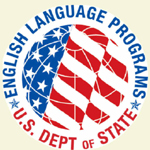Aware of art’s expressive power, numerous artists share Charlie Chaplin’s viewpoint. Likewise, many educators also believe that art works—through their visual presentation and stimulation of thought—can surpass textbooks. Following this belief, educators created Picturing America as part of the National Endowment for the Humanities’ (NEH) We the People Program. Launched in 2002, the goal of the project is “to offer a way to understand the history of America—its diverse people and places, its travails and triumphs—through some of our greatest artistic masterpieces” (Bruce Cole, NEH, 2002). Thus by incorporating American artworks into their lessons teachers can foster visual literacy and cultural and historical understanding.
Picturing America is designed as an educational tool for elementary, middle, and secondary students in the United States. The project contains forty works of American art. These artworks represent different media: sculpture, painting, photography, architecture, basket weaving, silver, and stained glass. The artworks, representing different time periods, come from public collections throughout the United States. Artworks were selected for “their quality, range of media, and ability to be grouped in ways that expand their educational potential.” (Picturing America Teachers Resource Book, xiii) While, the collection is by no means comprehensive, it does highlight significant masterpieces in American art history.
Artworks
The artworks in Picturing America are organized in a roughly chronological manner and by themes; teachers are given broad flexibility in how they use the materials. So as to facilitate easy viewing in the classroom, these forty artworks are reproduced on large, laminated posters. Each side of the posters contains an image—and the two images are related to each other by subject, theme, date or visual correspondence.
Teachers Resource Book
In addition to the reproductions, Picturing America also contains a Teachers Resource Book and website. The Teachers Resource Book contains brief essays about each artwork and its creator. Written for non-specialists, the texts are designed to convey essential information and stimulate further inquiry and class discussion. The texts are accompanied by questions that teachers can use to help students examine both the art and the subject matter of the image. These questions are written for different levels and are labeled—elementary, middle-, or secondary. Additional resources and subject indexes, which help connect the images with themes and topics, are featured at the end of the book.
Picturing America Website
The Teachers Resource Book is available for free on the NEH Picturing America website (PicturingAmerica.neh.gov). The website features most of the images. It also provides links to further resources, such as related lesson plans designed by the EDSITEment website (edsitement.neh.gov). The Picturing America website demonstrates how the images could be arranged by the following six sample themes:
- Leadership
- Freedom & Equality
- Democracy
- Courage
- Landscapes
- Creativity & Ingenuity
Taken together, these resources give teachers an opportunity to enrich their courses—whether in language, American history, literature, social studies, or geography—by introducing these artworks.

